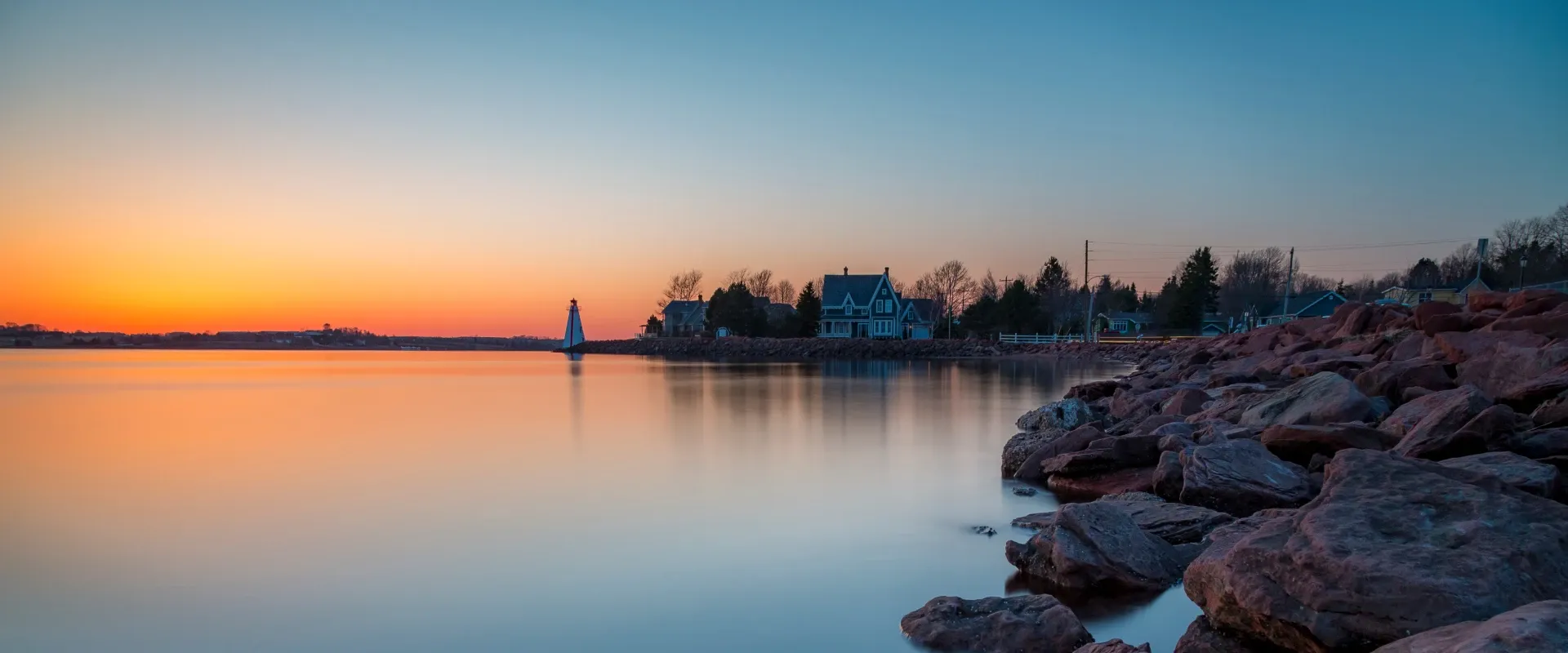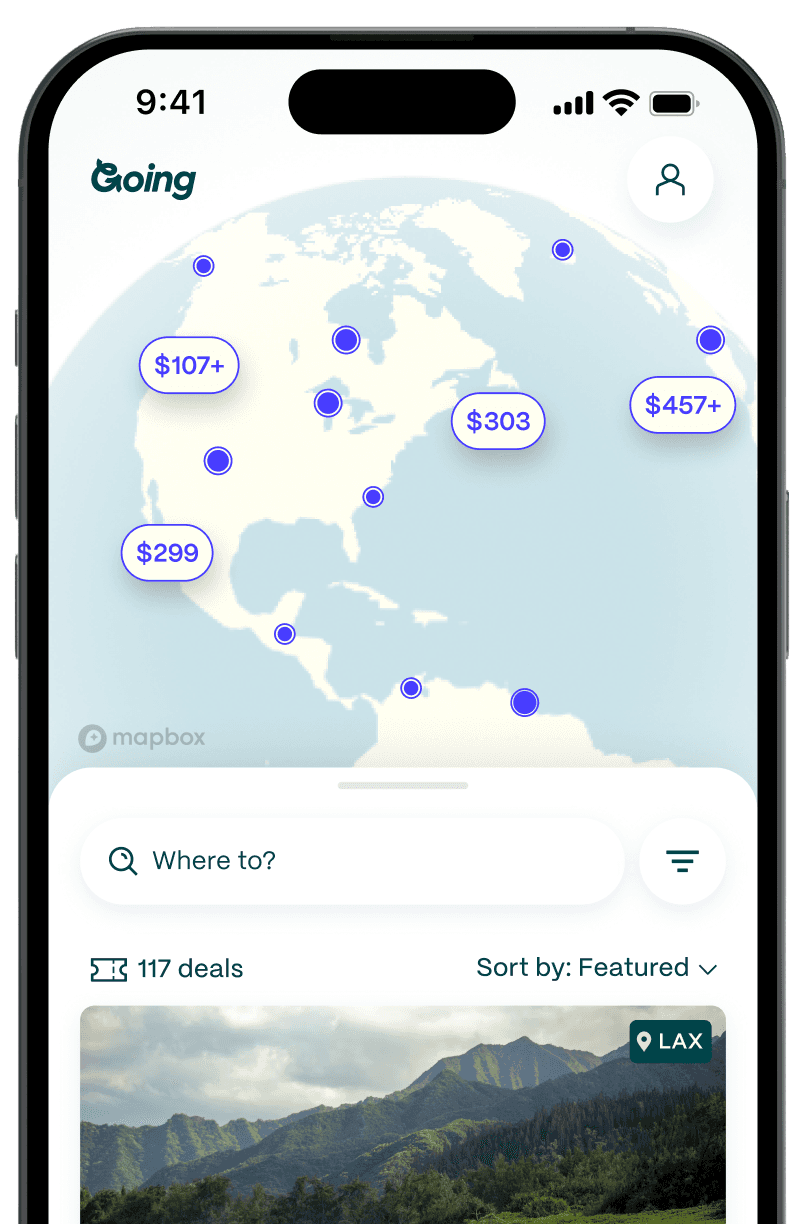
Prince Edward Island: The Canadian Province Where 'Anne of Green Gables' Was Born
Prince Edward Island (PEI) may be Canada’s tiniest province at just around 2,000 square miles (only slightly larger than Delaware), but with more than 600 miles of shoreline, you’re never far from a sandy beach or a restaurant serving the local catch. Yet there’s plenty more to explore on this Atlantic island, from its literary heritage to its culinary traditions and lively music. For the ultimate “slow travel” experience, follow PEI’s Island Walk, a 435-mile walking and bicycling route that circles the entire island.
The home of Canada’s literary sweetheart

Lucy Maud Montgomery grew up in Cavendish on PEI’s north shore. Using the island as her setting, she wrote a series of novels about a lively red-haired orphaned girl sent to live on a local farm. The first of these books, Anne of Green Gables, published in 1908, has become a Canadian—and international—classic.
Several PEI attractions introduce you to the Anne books and her author’s life. Start in Cavendish at Parks Canada’s Green Gables Heritage Place, where a modern museum shares details about Montgomery and life on PEI during the late 1800s and early 1900s; next door, in the “Green Gables” farmhouse, costumed interpreters bring you into Anne’s fictional world. You can walk from here to the site of Lucy Maud Montgomery’s Cavendish home, where the author wrote several of her novels.
At the Lucy Maud Montgomery Birthplace in New London, where the author was born in 1874, you can peruse letters and artifacts from her early life. Montgomery was married at her aunt and uncle’s Park Corner home, a property that still has the organ played at her wedding and is now the Anne of Green Gables Museum. The Bideford Parsonage Museum, an hour’s drive west of Cavendish, captures the time when Montgomery taught in a rural Tyne Valley school and lived here with a minister’s family.
The island is marking Lucy Maud Montgomery’s 150th birthday in 2024, so check Tourism PEI for special events.
600 miles of shoreline

Many of Atlantic Canada’s most beautiful sandy beaches stretch along PEI’s north shore, within the 5,400-acre Prince Edward Island National Park. The park’s three sectors each have different beach vibes. The busiest strands are to the west, starting with popular Cavendish Beach. Walk or cycle the paved path above the Cavendish–North Rustico beaches, stopping at whatever spot catches your fancy.
At the national park’s east end, the Greenwich sector has the most dramatic scenery: steep parabolic sand dunes. They’re best seen with a walk on the Greenwich Dunes trail, a 2.8-mile scenic route through the sands.
In the park’s center are several beaches in the Brackley-Dalvay sector, where you can also check out Covehead Harbour Lighthouse. Book a meal—or overnight stay—at Dalvay-by-the-Sea, a majestic 1895 manor with traditionally outfitted guest rooms and an excellent locally focused dining room. If you love art and good food, visit The Dunes Studio Gallery & Café for its craft galleries, sculpture garden, and restaurant.
Beyond the national park, you’ll find Cabot Beach Provincial Park, a sandy beach backed by red cliffs west of Cavendish. Nearby, you can eat your fill of local Malpeque oysters at Carr’s Oyster Bar or Malpeque Bay Oyster Barn. Argyle Shore Provincial Park’s red sands on the south shore offer a different beach vantage point, convenient to the cute village of Victoria-by-the-Sea, where you can detour for a seafood lunch at The Lobster Barn or Landmark Oyster House.
On the island’s quieter eastern side, relax in the sands at Panmure Island Provincial Park, then follow the narrow peninsular road to Panmure Island to climb to the lookout atop the unusual, eight-sided Panmure Island Lighthouse.
Canada’s food island

PEI residents grow, raise, or catch much of the region’s food, giving the province the nickname “Canada’s Food Island.” Lobster, mussels, snow crab, scallops, bluefin tuna, and several varieties of oysters and clams are all local, and island farmers raise beef, pork, lamb, turkey, and chicken. Potatoes are PEI’s main crop, and from spring through fall, locally grown asparagus, beans, and other produce turn up on island menus. You’ll find fresh strawberries, raspberries, and blueberries in summer and apples, pears, plums, and cranberries in autumn.
Chefs like Michael Smith, who cooks lavish, locally focused “FireWorks Feasts” at the Inn at Bay Fortune, and Hunter Guindon, who creates multi-course tasting menus for The Table Culinary Studio, are among PEI’s culinary stars; either destination is worth a trip to the island. But you don’t have to shell out for a high-end dinner to enjoy PEI’s bounty.
Lobster suppers, which include salads, chowder, pies, and more, along with your crustaceans, are a PEI tradition. An island priest claimed to have conceived the lobster supper as a fundraiser for his church in the 1960s, and today several restaurants offer these feasts, including Fisherman’s Wharf Lobster Supper in North Rustico, New Glasgow Lobster Suppers, and Cardigan Lobster Suppers.
More than 60 vendors sell produce, cheeses, and other PEI-made products, from maple syrup, baked goods, and seaweed-based cosmetics, to vodka, cider, and craft beer, at the year-round Charlottetown Farmers’ Market. The market has been a community hub in the island’s capital city since it first launched downtown in 1813. Many residents make shopping here, in the current location that opened in 1985, a regular part of their weekends.
You can’t miss the life-sized black-and-white cows outside PEI’s homegrown ice cream company’s shops, but to learn more about how COWS Creamery crafts its frozen treats, take a free self-guided tour at its factory store outside Charlottetown. You’ll get the scoop on their tasty ice creams, cheeses, and “cow chips” (chocolate-covered potato chips, and yes, they’re delicious), as well as their souvenir T-shirts bedecked with cow puns, like “Anne of Green Stables,” “Dairy Potter,” and a new design featuring this year’s “Cowlar Eclipse.”
The Lennox Island Mi’kmaq First Nation, the largest Indigenous community on PEI, offers several food and culture experiences. During their “Bannock and Clams in the Sand” workshop, you’ll make bannock, a traditional biscuit-like bread cooked under the sand in an outdoor firepit, grill local mollusks, and tour the community’s cultural center. You can also sign up for quill work or drum-making classes.
The first French Acadians settled on PEI’s northern shores in the 1760s, and you can learn more about their heritage at Doucet House National Historic Site. But an even more delicious Acadian experience is the “Traditional Acadian Meal,” including dishes like chicken fricot (a savory stew) and meat pies with homemade pickles, that you can help prepare in the Doucet House kitchen.
PEI’s professional chef training school in Charlottetown, Culinary Institute of Canada, offers half- or full-day courses for home cooks. At these “Culinary Boot Camps,” you might learn to barbecue, bake bread, or cook local shellfish. They offer workshops for families, too.
Another great way to taste PEI’s bounty is at the island’s food fests. Come in autumn for both the Fall Flavours Festival, two weeks of chef events, culinary cycling tours, Indigenous cultural celebrations, and other epicurean experiences, and the PEI International Shellfish Festival, a four-day seafood extravaganza, with oyster-shucking contests, bivalve samplings, and an enormous kitchen party.
Distinctively PEI

Start your PEI explorations with an entertaining Secrets of Charlottetown walking tour around the island’s compact capital, where you’ll hear about a ghost ship, pirates, early women entrepreneurs, and other stories from the region’s past. Or, to delve deeper into area heritage, join Prehistoric Island Tours for a family-friendly 90-minute walk through a major PEI fossil site. You’ll see fossilized trees preserved in the sand, listen to tales of ancient reptiles that predated the dinosaurs, and leave with a better understanding of how PEI’s island territory was formed.
You can’t miss the gigantic spud outside the Canadian Potato Museum, which will tell you more than you ever needed to know about PEI’s major crop, first planted back in 1790 in the red, iron-rich soil that provides an optimal growing environment. The island now produces more than two billion potatoes every year, and local meals typically come with french fries, baked potatoes, roasted potatoes, or some other form of tater. Wrap up your museum visit with lunch in the café, where potatoes—stuffed with cheese, chili, and more—come with a side of potato chips.
At the Bottle Houses, another eclectic attraction southwest of Wellington, the late Édouard Arsenault built several buildings from more than 25,000 reclaimed glass bottles. Visit on a clear day when the sun illuminates the multi-hued glass.
Musical PEI
From traditional Celtic melodies to contemporary singer-songwriters, you’ll always find music somewhere on PEI. As in all the Atlantic Canadian provinces, music has long been an important element of local culture, from the Indigenous peoples’ songs and dances to the fiddle-focused music and foot-stomping “kitchen parties” that arrived with Irish, Scottish, and Acadian settlers.
In Charlottetown’s Arts Hotel, Trailside Music Hall hosts local and regional performers, while on the island’s west end, the Stompin’ Tom Centre shares the story of PEI musical icon Stompin’ Tom Connors (1936–2013), a country-folk singer-songwriter known for classic tunes like “Bud the Spud” and “The Hockey Song,” with lyrics that keenly captured elements of Canadian popular culture. The center also hosts high-spirited free music hours inspired by Connors’ tunes.
Part concert and part kitchen party, a ceilidh—pronounced KAY-lee—combines toe-tapping music, songs, dance, and often stories, drawing on Irish, Scottish, and maritime traditions. Ceilidhs were originally held in islanders’ homes, as entertainment in the pre-TV, pre-movie eras, but these days, most take place in concert venues or pubs. Join the fun at events like Ceilidh In The City in Charlottetown or the Ross Family Ceilidh.
Check for island music fests, too. For ten days in June, the Festival of Small Halls hosts concerts at venues around the island, while the Under the Spire summer music series is held “under the spire” in the 1902 St. Mary’s Church. The annual July Cavendish Beach Music Festival is Atlantic Canada’s largest outdoor concert, typically drawing more than 60,000 fans for a weekend of country music.
How to catch your supper

On PEI, you can roll up to a restaurant and be served your favorite seafood, or you can get a lot more hands-on. Love lobster? Book a “Lobster Lovers’ Tour” with the Fiddling Fisherman, where lobster fisher and musician JJ Chaisson and his wife/business partner Julie take you out on their family boat to haul your dinner from a lobster trap, accompanied by fiddle music.
Nature Space Resort runs the “Oyster Lovers’ Kayak Experience,” where you learn about oyster farming—and taste the bivalves—on a kayak tour. A traditional way to gather oysters uses long tongs; Along the Edge Experiences offers “Oyster Tong & Shuck,” an intro to collecting, shucking, and sampling the shellfish. Prefer clams? Tranquility Cove Adventures offers “Clam Digging Tours,” where you’ll unearth giant bar clams.
Island walking

PEI’s Island Walk, completed in 2021, is a 435-mile walking or cycling route that circles the entire island. Modeled after Spain’s Camino de Santiago and divided into 32 segments of 7–16 miles each, the Walk follows a mix of mostly flat or gently rolling established trails, red-dirt paths, and back roads through small towns, past sandy beaches, and above scenic cliffs. You can walk for a day or several weeks, exploring the island at a leisurely pace.
To plan your walk, start with The Island Walk website and Facebook group, which both have lots of advice. Local outfitters Go for a Walk: Island Walk Coordination Service and Outer Limit Sports assist with trip planning, luggage transport, and accommodations; MacQueen’s Bike Shop offers similar services for cyclists.
Bedding down around the island
On PEI, there’s no need to stay in a run-of-the-mill lodging. Instead, you can sleep in your choice of unique accommodations.
At Nellie’s Landing, wine casks have been turned into comfortable floating cabins anchored in the marina, where you’ll bob gently on the waves through the night. Love music? Stay in a compact room painted with vibrant murals in Charlottetown’s Arts Hotel, where the lobby-level Trailside Music Hall hosts regular concerts.
You can sleep in your very own sea shanty, tiny cabins with rough-hewn white cedar walls modeled on fisher folk’s quarters, at Shanty Stay in Souris. Or check into a petite off-the-grid camping cabin with loft beds at Meridian 63° in wooded Strathgartney Park, or a “TreePOD,” a geodesic dome in the forest, complete with kitchen, wrap-around deck, and outdoor hot tub, at Treetop Haven, both nature retreats near Charlottetown.
Fancy a stay in a retired lighthouse? Book the “Tower Room” at West Point Lighthouse Inn for a view over the ocean, or reserve the larger “Keeper’s Quarters,” where the lighthouse keeper once resided.
Good to know
Is Prince Edward Island expensive?
PEI has limited “budget” accommodations. Beyond the good-value Charlottetown Backpackers Inn and summer-only apartments in a Holland College residence hall, rooms in guesthouses, B&Bs, and small inns typically start at CAD$150–$200 per night. Car rentals are the other major expense for travelers. Uber and Lyft don’t currently operate on PEI, though a local rideshare company, Kari, provides limited service. If your schedule is flexible, you can reach some island destinations on T3 Transit buses.
Best time to visit Prince Edward Island
PEI is a summer destination. Many island spots—from beaches to restaurants and accommodations—are open only during the short summer season, from June into September. The May and October shoulder months can be less crowded. Avoid November to April unless you want to hole up amid snowy streets and blustery winds.
Prince Edward Island with kids
If your youngsters love the beach, they’ll have a blast on PEI, with enough sandy stretches to pick a different one every day of your holiday. Kids who’ve read the Anne of Green Gables novels may enjoy learning more about the books and their author, while plenty of seafaring adventures, from lobstering to kayaking, could be suitable for children.
Prince Edward Island public transportation
Charlottetown, PEI’s capital, is compact and walkable; T3 Transit buses can take you to the city’s outer neighborhoods. The transit company’s rural routes provide inexpensive travel beyond Charlottetown if you can sync your trips with their limited schedules. However, exploring PEI is still easiest by car.
Is Prince Edward Island safe?
Canada ranks #11 out of 163, according to Vision of Humanity’s Global Peace Index. Predominantly rural PEI is considered a safe destination, though all travelers should take normal precautions, particularly when walking at night or driving on isolated country roads. Check for high surf warnings and jellyfish alerts before swimming, and stay off the island’s cliffs; Parks Canada warns that the scenic but soft red sandstone can easily give way. Keep abreast of local weather, too, especially in autumn, when hurricanes or tropical storms can drench the island, and in the often snowy winters.
Canada also ranks #8 with a score of 81/100 for LGBTQ+ equality, according to Equaldex's LGBT Equality Index. While Prince Edward Island doesn’t have the large LGBTQ+ population or resources of Canada’s major cities, it’s generally considered a welcoming LGBTQ+ destination.
Getting to PEI
- PEI’s main airport is in Charlottetown. You may find more flight options through Halifax, Nova Scotia (YHZ), about a three-hour drive or bus trip away over the eight-mile-long Confederation Bridge that links Prince Edward Island to the mainland. A seasonal 75-minute car ferry connects the town of Wood Islands in eastern PEI with Caribou, Nova Scotia, which is 105 miles northeast of Halifax.
- Average Going deal for cheap flights to Charlottetown: $350 roundtrip
More Canada destinations
Last updated June 13, 2024









